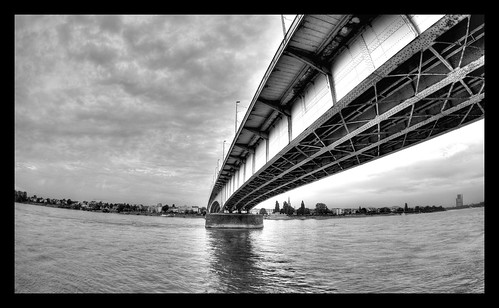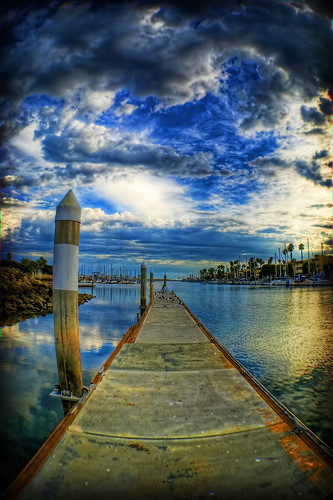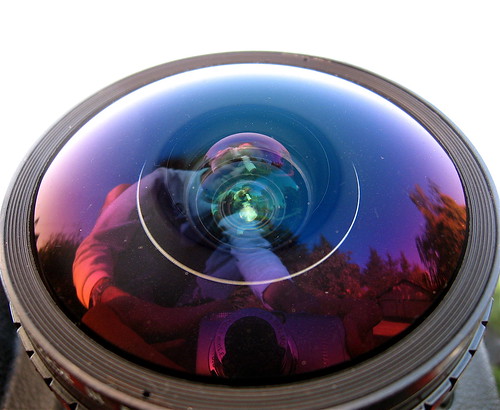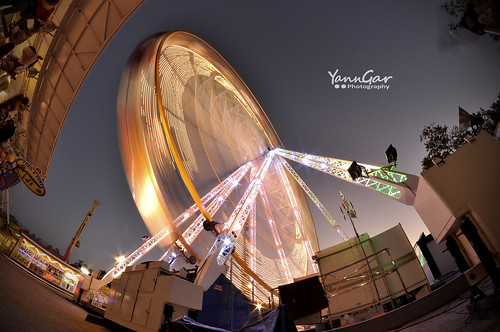I like the google maps functionality of displaying photos on the map, linked to panoramio.com, it is very useful when you are looking for a place to spend your holiday.
loc.alize.us is a similar service which displays on a google map photos from flickr. You can chose to display photos from a specific user, or a specific place. What is appreciable is that you can see the tags and search by tag. I wish there was the possibility to use your flickr information, such as your contact list. It may be developed at a later time.
For example this is a search of my most prolific contact, cogdogblog (more than 18,000 public photos at this time!):
Photos need to be geotagged of course, and public. Here is a map of Paris tagged "architecture":
Now you can share maps of your own travels! I think I might share maps from time to time.
version française
Description
The lizard filters the best of photography for you! Follow it on #photolizard or with rss
Monday, February 28, 2011
Sunday, February 27, 2011
What you may have missed this week (1)
This week I am starting a new thread that will be up every sunday. It's a compilation of articles and photos published during the week that have been popular, or ones I particularly enjoyed. This way you won't miss photo news.
Let's start right away!
I would like to thank every person who shared my articles this week :)
More news next week!
version française
Let's start right away!
Back to the future
I had already seen projects of before/after photos of people. Irina Werning's "Back to the future" project goes further, as the photographer did everything possible to make the after picture look like the before shot: background, accessories, clothes and even facial expressions. No doubt Irina Werning is a perfectionist!Light-Paint Piano Player
I am not used to publish videos here. This one is very impressive and light painting fans will undoubtely appreciate. I found it first on photographyblogger.net. Man Ryan Cashman rocks!Light-Paint Piano Player from Ryan Cashman on Vimeo.
22 Remarkable Pictures of Rust
Another article from photographyblogger.net, a neat compilation of pictures of Rust by Tim Kok. I love it.Photos opportunities
Corinne Vionnet has done a tremendous work on her Photos opportunities project. For 26 famous landmarks she has collected and merged thousands of photos into one picture. Results look like paintings.Lezardphotographique
The article Accessory Guide: Memory Card has been very popular this week, partly thanks to the site photo geek.I would like to thank every person who shared my articles this week :)
More news next week!
version française
Saturday, February 26, 2011
10 Superb Bokeh
Today I would like to share 10 of my favourites bokeh photos including one from Romain Ballez's 60 quotes project and one from a previous 365 of ~jjjohn~'s.
Enjoy!
version française
Enjoy!
version française
Friday, February 25, 2011
Thursday, February 24, 2011
365: Elkana Randrianaivo
I often write about the difficulties of running a 365 project and completing it. Well some photographers want to take the challenge to the next level.
Elkana Randrianaivo is one of them. He does not want to take any picture, he wants to push his boundaries and come up with a new idea every day. So basically he tries and build a photograph from an idea he has on mind, setting a scene and appropriate lighting. I feel this is a real artistic approach. Elkana told me he keeps learning from this project, I believe no matter your level as a photographer a 365 project is a good way to keep evolving.
Elkana Randrianaivo - 365
version française
Elkana Randrianaivo is one of them. He does not want to take any picture, he wants to push his boundaries and come up with a new idea every day. So basically he tries and build a photograph from an idea he has on mind, setting a scene and appropriate lighting. I feel this is a real artistic approach. Elkana told me he keeps learning from this project, I believe no matter your level as a photographer a 365 project is a good way to keep evolving.
Elkana Randrianaivo - 365
version française
Wednesday, February 23, 2011
Photoblog atzoom
I like to write about various subjects, it has been a long time since I last introduced a photoblog.
photoblog.atzoom.com is a photoblog run by Pierre. It could have been introduced in the 365 section as Pierre tries to publish pictures on a daily basis. Pierre shares a lot of pictures about France taken with Canon gear. How not to like??
The blog consists of a series of experimentations, various photos through which Pierre acquires more maturity.
Pierre - photoblog.atzoom.com
version française
photoblog.atzoom.com is a photoblog run by Pierre. It could have been introduced in the 365 section as Pierre tries to publish pictures on a daily basis. Pierre shares a lot of pictures about France taken with Canon gear. How not to like??
The blog consists of a series of experimentations, various photos through which Pierre acquires more maturity.
Pierre - photoblog.atzoom.com
version française
Tuesday, February 22, 2011
Cheap accessory guide: lens cap clip
Don't you think there is a major practical problem with your dSLR? When you take it out of its bag, you put the strap on, remove the lens cap, turn the camera on and start shooting.
You take your shot, look at the picture (and smile), turn off the camera, put the lens cap back o... wait... where is... not that pocket... not this one... not here... Where in the world is the ^$*@#!* lens cap??
You know what I mean right? Most of the time, after two minutes you remember where you put your lens cap. Hopefully it wasn't in a dusty pocket. Some other times however it fell somewhere and you won't ever find it back. It's not that expensive, but losing it is very annoying and your lens remains unprotected until you get a new one (which you might end up losing too).
Sometimes the best ideas are the simplest. Hüfa definitely got that! They sell what should comes with every camera: a lens cap clip. Attach it on your bag, camera strap, shirt, anywhere you want and don't lose your cap ever again. You get one for $12.95 and three for $33, free shipping in the US. Until camera manufacturers think of a place on your camera where you could clip your cap, this is probably your best option.
Hüfa
version française
You take your shot, look at the picture (and smile), turn off the camera, put the lens cap back o... wait... where is... not that pocket... not this one... not here... Where in the world is the ^$*@#!* lens cap??
You know what I mean right? Most of the time, after two minutes you remember where you put your lens cap. Hopefully it wasn't in a dusty pocket. Some other times however it fell somewhere and you won't ever find it back. It's not that expensive, but losing it is very annoying and your lens remains unprotected until you get a new one (which you might end up losing too).
Sometimes the best ideas are the simplest. Hüfa definitely got that! They sell what should comes with every camera: a lens cap clip. Attach it on your bag, camera strap, shirt, anywhere you want and don't lose your cap ever again. You get one for $12.95 and three for $33, free shipping in the US. Until camera manufacturers think of a place on your camera where you could clip your cap, this is probably your best option.
Hüfa
version française
Monday, February 21, 2011
Accessory Guide: Memory Card
Memory cards are an important matter, as I read on an article "without them you cannot take pictures". In a perfect world we would just check if we do or do not have one in the camera, nothing more.
Unfortunately (or not) this is not a perfect world, and there are other points to check about memory cards you get.
Also to take into account: do you carry a computer or another hardware you can unload your card on? Do you mind swapping cards (how often)?
If you listen to marketing, size is the only feature that should be taken into consideration. Yes, marketing has its way to make us focus on things and hide the rest of the picture from us. Choice would be simple to make if we lived in marketing world right? Well the bad news is we don't live in this wonderland.
We talk about card speed, actually it is card speeds: reading speed and writing speed. They are not the same. It is much faster to read than to write (if you find this weird, think about how fast you read a line of text and how fast you write it).
Reading speed is mainly important when you want to transfer your photos to another storage (your computer, an external hard drive, etc.). If your card is really slow, you will also feel it when you browse your pictures from your camera.
Writing speed is crucial while taking photos. You don't want to miss a shot because your camera is saying "wait will I write on your card". It is even more important if you use continuous shooting mode.
As speed is not the main marketing argument, it varies a lot between two cards. To make this information more readable, "classes" have been introduced, most of the time you find class 2, class 4 and class 6 cards. Again, your need will depend on the size of your photos and how you use your camera. I personnally choose only class 6 cards. But even among cards in the same class, important differences can be found. If you are looking for the best hardware, you should definitely read reviews (see end of article).
To make a choice, it can be very helpful to read reviews such as:
Note: I did not get paid by Sandisk for the choice of photos!
version française
Unfortunately (or not) this is not a perfect world, and there are other points to check about memory cards you get.
Size
Size is one of them. Nowadays cards go from 2GB to 32GB, more or less. What you need to do first is check the size of the pictures you take. If your camera handles RAW format, ask yourself what you want to get: JPEG files only, RAW files only, or JPEG + RAW (if available). Also do you want to take full size pictures? After that, when you know the size each picture will take on the card, you can work out the number of pictures you can fit on a card. This is what matters after all.Also to take into account: do you carry a computer or another hardware you can unload your card on? Do you mind swapping cards (how often)?
If you listen to marketing, size is the only feature that should be taken into consideration. Yes, marketing has its way to make us focus on things and hide the rest of the picture from us. Choice would be simple to make if we lived in marketing world right? Well the bad news is we don't live in this wonderland.
Speed
Speed is as important as size. When you see the size of the pictures you take, and have an idea of storage speeds, you have reasons to worry about speed! For example, I shoot in RAW+JPEG, my RAW files are about 20MB each and JPEG about 6-8MB (or more). That's 25-30MB per shot. When I move files from a disk to another on my computer, I'm happy to reach 20MB/s. With the same speed it would take more than a second to write a picture on my card; and you will not reach that writing speed. Imagine you take 5 pictures in a row. Now we've got a problem! Don't worry, your camera has a cache, data is written there first (it's much faster) and when the camera has time the photos are written on your card.We talk about card speed, actually it is card speeds: reading speed and writing speed. They are not the same. It is much faster to read than to write (if you find this weird, think about how fast you read a line of text and how fast you write it).
Reading speed is mainly important when you want to transfer your photos to another storage (your computer, an external hard drive, etc.). If your card is really slow, you will also feel it when you browse your pictures from your camera.
Writing speed is crucial while taking photos. You don't want to miss a shot because your camera is saying "wait will I write on your card". It is even more important if you use continuous shooting mode.
As speed is not the main marketing argument, it varies a lot between two cards. To make this information more readable, "classes" have been introduced, most of the time you find class 2, class 4 and class 6 cards. Again, your need will depend on the size of your photos and how you use your camera. I personnally choose only class 6 cards. But even among cards in the same class, important differences can be found. If you are looking for the best hardware, you should definitely read reviews (see end of article).
Budget
I wish I could forget about this point sometimes. But very few of us can. Quality has a price, sad but true. The good news is with internet there is a lot of competition, so don't buy too fast, check prices everywhere before buying.Compatibility
Last but not least, check if the card you want to get is compatible with your camera. This sounds obvious I know, but be sure before buying, you don't want a bad surprise. With SD cards for example, you can have three cards which look exactly the same, but one is SD, another is SDHC (SD 2.0) and the third is SDXC. While a device that reads SDXC will read a SD card, the opposite is not (always) true.Which to choose
Most of the time you decide (vote?) a budget, check what you can get with it, higher your budget because you want something better and buy. Here I would advise the opposite. This element is very important so you should first decide what is best to get, then look for the lowest price for this product. Also you can ask yourself if you should get one card of a given size or two cards of smaller size. In any case it is still good to have a backup card.To make a choice, it can be very helpful to read reviews such as:
- 13 SDHC Memory Cards Reviewed on Tom's hardware
- Roundup: CompactFlash Cards For Professionals on Tom's hardware
- High Performance CompactFlash Benchmarks on Canon 1D Mark IV on Slash Gear
- CF/SD Performance Database on Rob Galbraith
Note: I did not get paid by Sandisk for the choice of photos!
version française
Sunday, February 20, 2011
Subscribe to:
Comments (Atom)

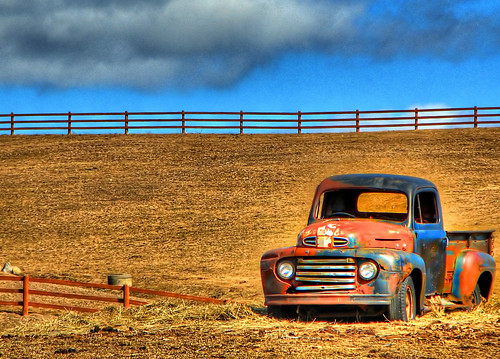








![Quotes - 39 / 60 <b>The voyage of discovery consists not in seeking new landscapes but in having new eyes ~ Marcel Proust.</b> Lets go back to some concrete stuff ! Wall-e finaly made up his way through the <a href="http://www.flickr.com/photos/profete/4343284596/in/set-72157621721051963"><b>umbrella</b></a> and ended on this pylon. It was his first time outside. Seeing somebody playing with a little toy on the street makes the people quite suspicious, as usual. You probably missed it, but the project and a serie of concert shots have been projected at the <a href="http://bardumatin.blogspot.com/" rel="nofollow"><b>Bar du matin</b></a>. Heres a <a href="http://www.facebook.com/photo.php?fbid=461595236086&set=a.461595071086.256776.291270891086" rel="nofollow"><b>shot</b></a> of the event. Dont forget to <a href="http://www.facebook.com/bromainphotography" rel="nofollow"><b>subscribe</b></a> while youre there. 21 shots to go ! [ <b>Setup</b> ] ► Canon eos 5D II - 50mm f:1.4 @ 1/50 f:1.4 iso100. [ <a href="http://www.flickr.com/photos/profete/sets/72157621721051963/"><b>60 quotes project</b></a> I <a href="http://www.facebook.com/bromainphotography" rel="nofollow"><b>Facebook</b></a> I <a href="http://twitter.com/Profete" rel="nofollow"><b>Twitter</b></a> ]](http://farm5.static.flickr.com/4112/5180829231_a3ebb79cd8.jpg)



















